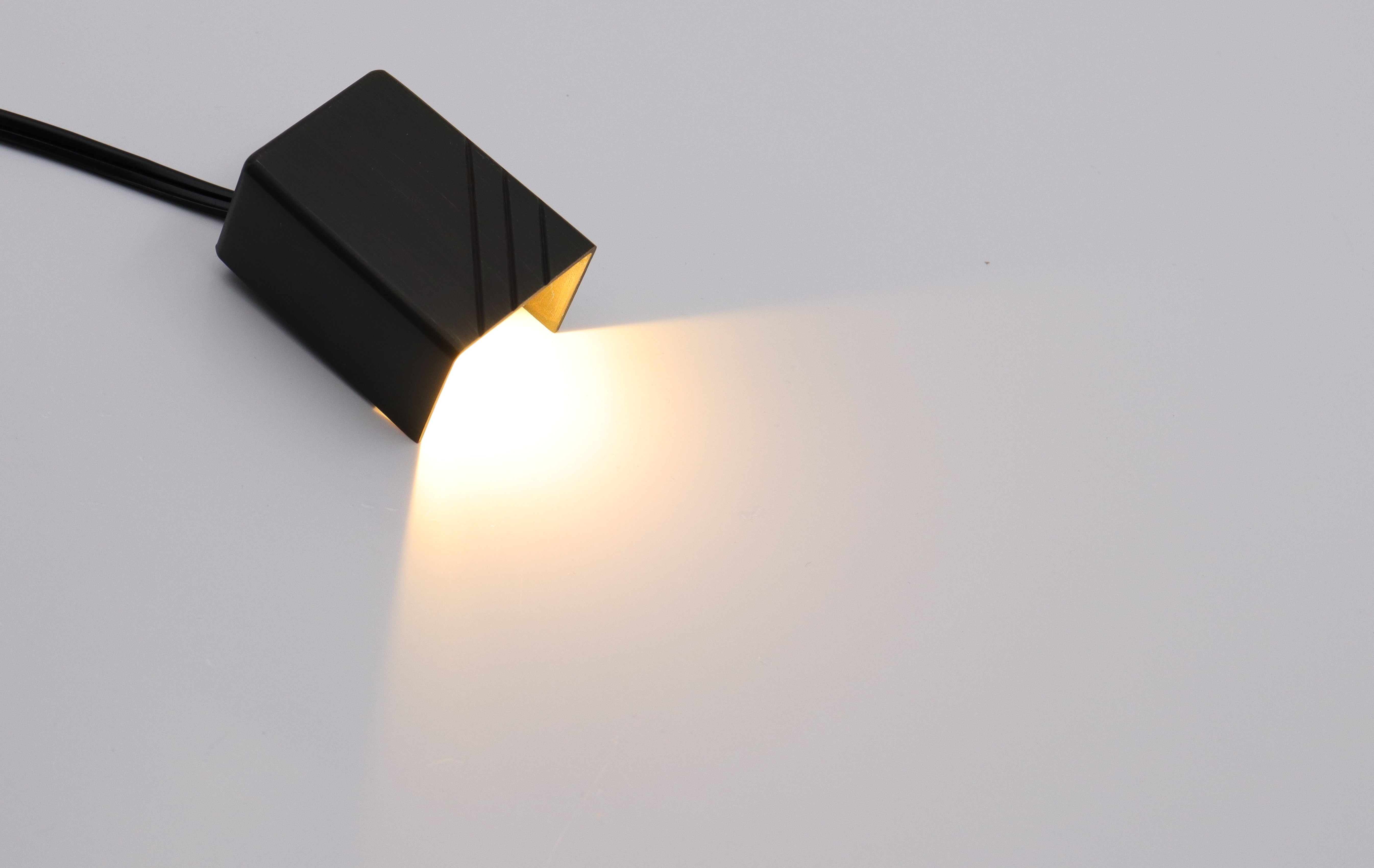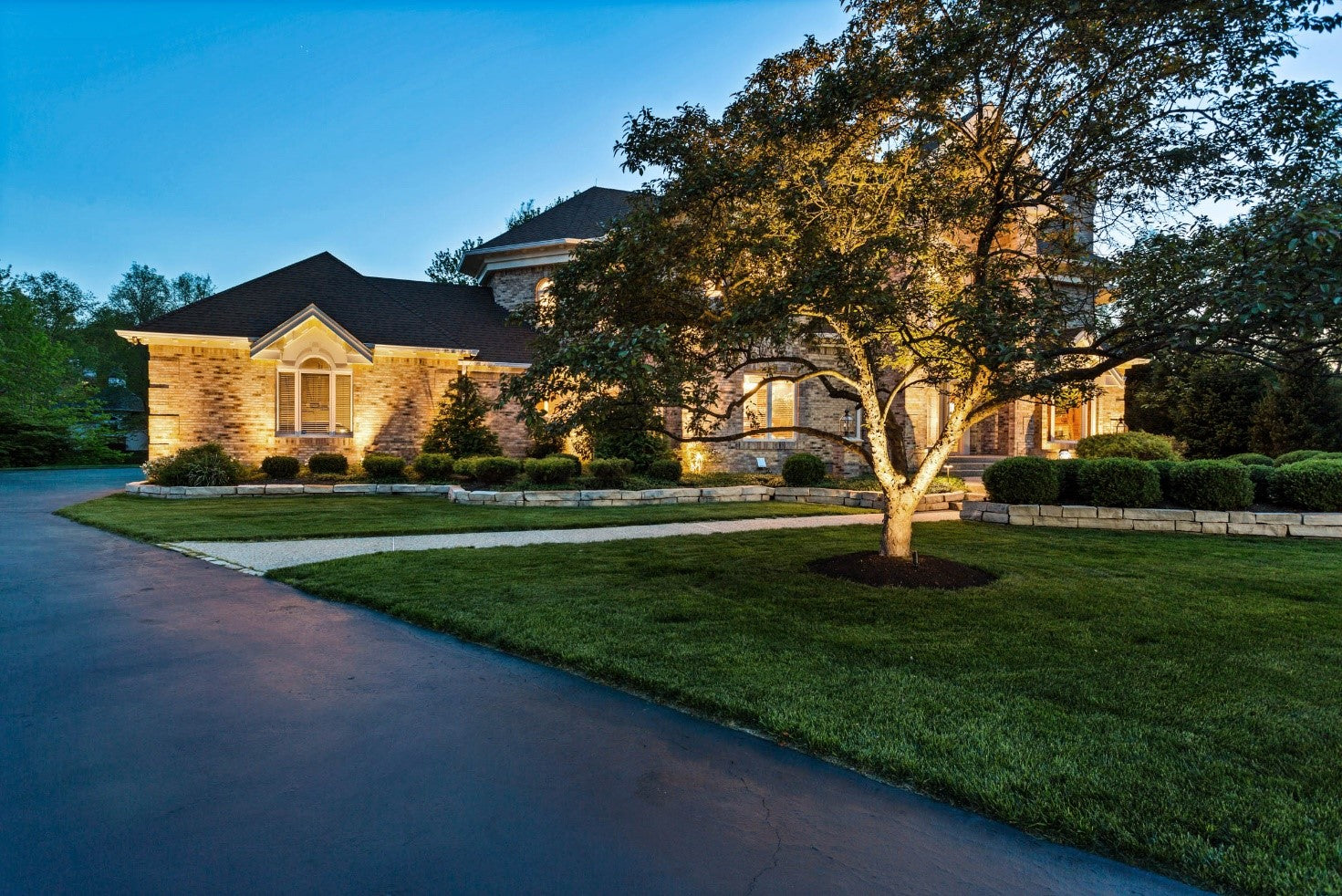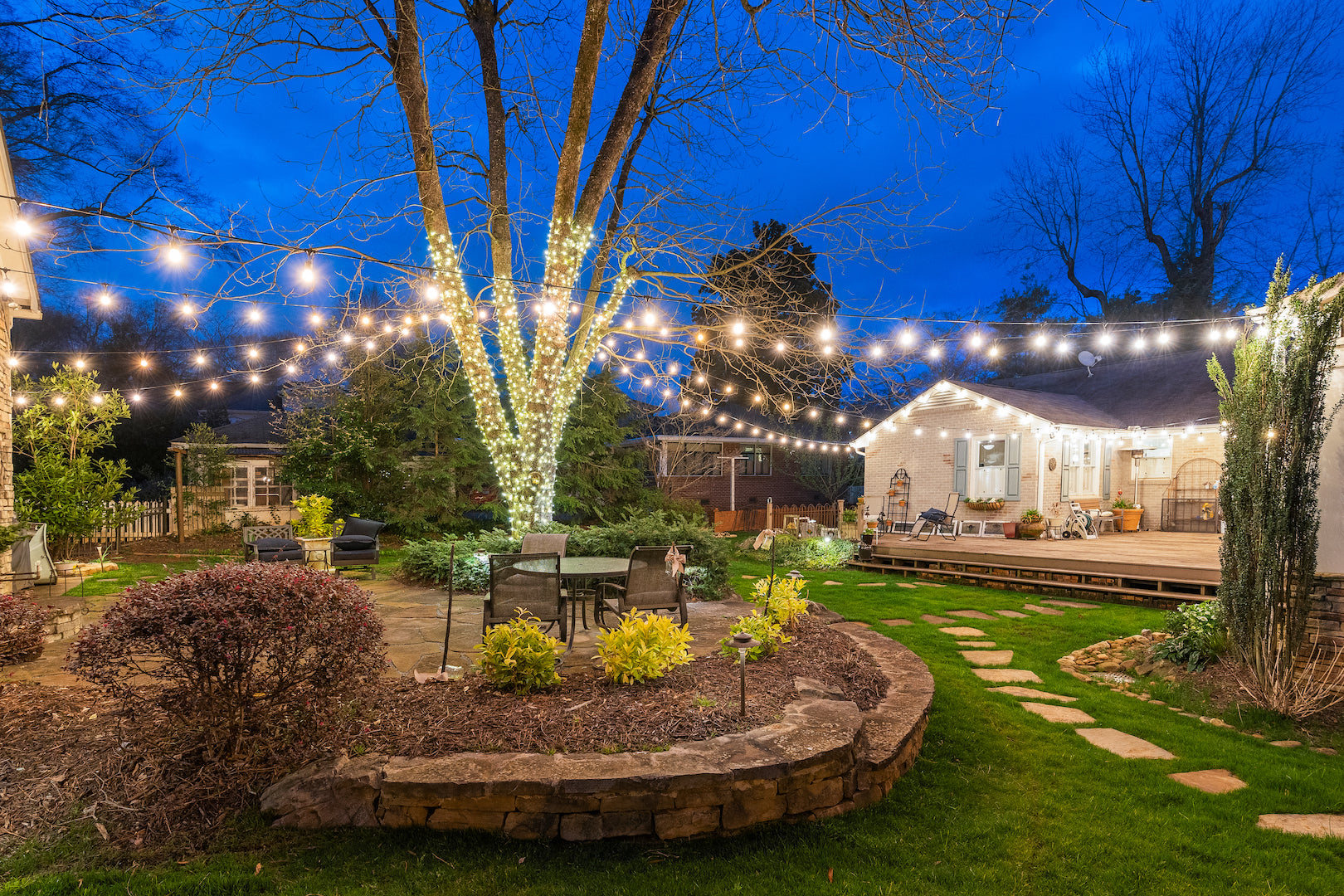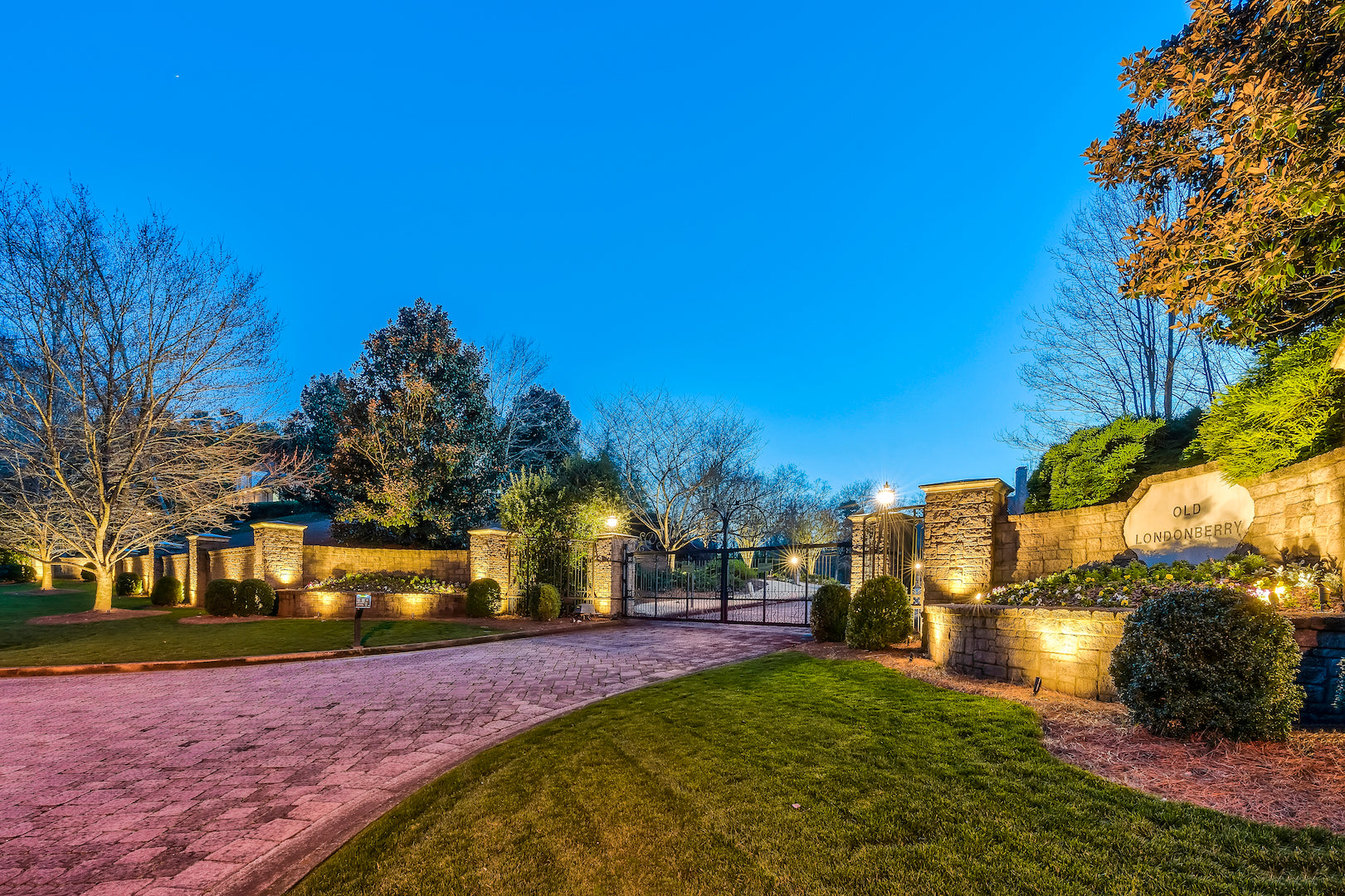Outdoor lighting enriches the night-time landscape, offering both aesthetic appeal and functionality. It is a crucial element for anyone looking to enhance the beauty of their outdoor space. In this area, uplighting and downlighting among others are two effective techniques for illuminating trees.
So in today's article, we'll focus on these two methods, their differences, and their appropriate applications to guide you in creating an inviting outdoor environment.
How to Illuminate a Tree Outdoors
Illuminating a tree outdoors requires strategic placement of lighting fixtures to highlight the tree's best features and ensure the area remains functional after dusk. There is a wide range of lighting techniques that can illuminate trees:
Uplighting:It is characterized by the installation of lighting fixtures at the tree's base, directed upwards. This technique magnificently illuminates the lower trunk and branches, casting intriguing shadows and bringing to life the intricate textures and forms of the tree's bark and foliage. It's akin to placing the tree on a pedestal, transforming it into a striking feature of the night landscape. This method is particularly effective for trees with unique architectural forms or detailed bark, as it highlights these features, creating a visual spectacle that captivates and delights.
Downlighting:This involves positioning the lights above the tree, usually mounted on branches or adjacent structures, with the beams pointing downwards. This method simulates the gentle, diffused light of the moon, casting a serene and even illumination that enhances the natural shapes and spaces within the tree's canopy. Downlighting is less about drama and more about creating a peaceful, secure environment. It softly lights the area beneath the tree, reducing harsh shadows and creating a safe, welcoming atmosphere that encourages evening enjoyment of outdoor spaces.
Side Lighting:This technique involves placing lights on one side of the tree, creating a dramatic interplay of light and shadow. By strategically positioning the lights, you can accentuate the textures and shapes of the tree, adding depth and dimension to the landscape.
Backlighting:Positioned behind the tree, backlighting creates a striking silhouette effect. This method is particularly effective in highlighting the distinctive outlines of trees, enhancing their natural form and contributing to a layered, multidimensional outdoor space.
Moonlighting:A softer, more natural approach, moonlighting involves placing lights high in the tree, casting gentle shadows akin to those cast by the moon. This technique is ideal for creating ambient lighting that is subtle yet effective, perfect for areas where a serene, natural feel is desired.
Color Lighting:Introducing colored lights can transform the mood of a landscape, adding whimsy or drama. This approach is adaptable and can be used to celebrate seasons, holidays, or simply to inject a touch of playfulness into the night garden.
Cross Lighting:By illuminating a tree from multiple directions, cross lighting ensures that the tree is evenly lit, reducing shadows and highlighting the unique features of its branches and leaves. This technique is excellent for showcasing the full beauty of a tree from all angles.
Common Types of Lights for Uplighting Trees
| Type of Lights | Description | Ideal Use |
|---|---|---|
| In-ground lights | Installed flush with the ground, these lights point upward to illuminate trees from the base upwards. | Best for highlighting the trunk, lower branches, or the canopy. |
| Spotlights | Focused beam lights that can be directed at specific points. | Perfect for accentuating unique features, such as a knotted trunk or an interesting branch structure. |
| Floodlights | Provide wide, uniform illumination over large areas. | Suitable for illuminating large trees or dense groups of vegetation. |
Common Types of Lights for Downlighting Trees
| Types of Lights | Description | Ideal Use |
|---|---|---|
| Hanging lights | Lights that can be suspended from branches, creating a natural, soft glow as if from the moon. | Excellent for simulating moonlight and creating ambient lighting in the area beneath the tree. |
| Tree-mounted lights | Fixed directly onto the tree, shining light downwards. | Ideal for illuminating the ground directly beneath the tree, such as pathways or seating areas. |
| Wall lights | Mounted on walls or other vertical structures, these cast light downward. | Great for providing illumination and security by highlighting the area around the base of the tree. |
When to Separate Uplighting vs. Downlighting for Outdoor Trees
| Aspect | Uplighting | Downlighting |
|---|---|---|
| Positioning | Base of tree | Above the tree |
| Effect | Dramatic and bold | Serene and soft |
| Application | Highlight tree features | Functional space lighting |
| Installation | In-ground, spotlights | Hanging, tree-mounted |
| Illumination | Shadows cast upwards | Diffused light downwards |
| Use Case | Accentuating architecture | Pathways and safety |
Minimizing Light Pollution and Disturbance:When there is a need to minimize light spill and reduce the impact on neighboring properties or local wildlife, downlighting is again the advisable approach. It can be directed more precisely and contained within the intended area, reducing the potential for intrusive light pollution that can arise from the more expansive reach of uplighting.
When to Combine Uplighting & Downlighting for Outdoor Trees
Landscape Features and Focal Points:If your garden has special features, such as sculptures, water elements, or unique plants, using a combination of uplighting and downlighting can help highlight these points of interest while providing a cohesive look to the overall landscape.
Final Words for Tree Outdoor Lighting
Outdoor lighting, representative of uplighting and downlighting, offers possibilities for enhancing the natural beauty and safety of your landscape. While uplighting brings drama and focus to the majestic forms of trees, downlighting offers a gentle, calming glow reminiscent of moonlit nights.
Besides, you should avoid some common outdoor lighting mistakes based our tips.






Leave a comment
All comments are moderated before being published.
This site is protected by hCaptcha and the hCaptcha Privacy Policy and Terms of Service apply.